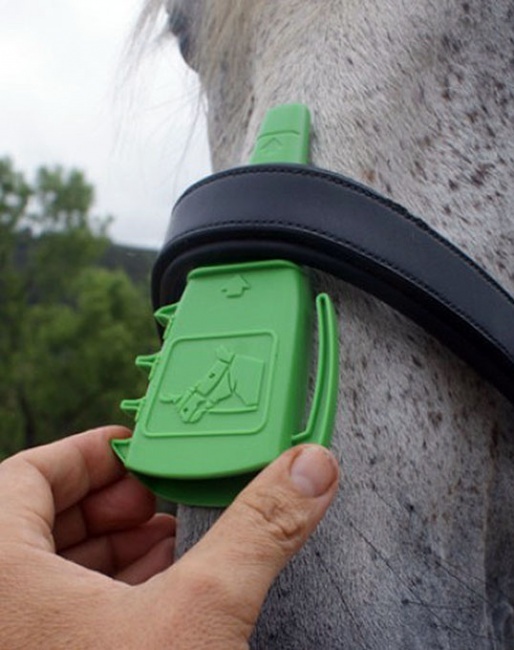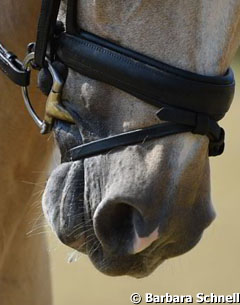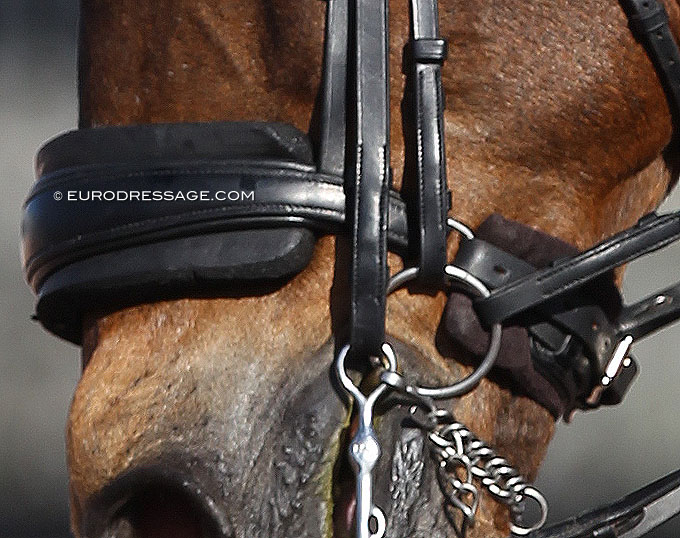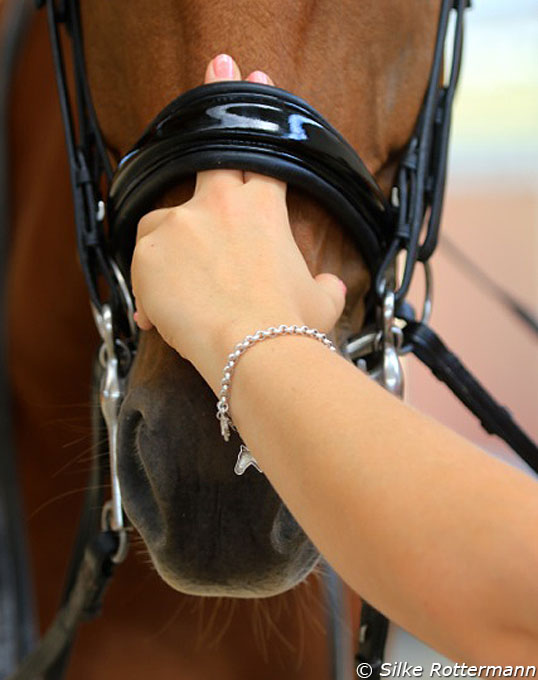
-- Text by Equestrian Canada
Encouraging awareness and education about noseband tightness in Canadian competition with a review of the white paper and published scientific paper on the Equestrian Canada Noseband Pilot Project.
In 2021, Equestrian Canada (EC) launched the Noseband Measuring Pilot Project (NMPP or the Pilot). The goal of this project was to assess the prevalence of overtight nosebands and noseband use trends in Canadian equestrian competition. It has been shown that overtight nosebands can pose welfare issues to horses, with risks to both physical and mental wellbeing. The NMPP also served to test the usefulness of a standardized form of noseband measurement in equestrian competition and the Canadian equine industry’s perceptions of issues surrounding noseband use and measurement.
Increased international equine ethics concerns have brought noseband tightness and measurement back in the spotlight with proposals released this summer for Federation Equestre Internationale (FEI) noseband rule changes for the 2024 competition season. Reviewing the good work that was done here in Canada can help athletes in our country better understand the issue ahead of any imposed changes at the FEI level.
Publications about the Pilot
A white paper summarizing the Pilot was created and included conclusions based on findings and recommendations on further steps the industry might take around noseband tightness regulations. The full report was prepared by a group of fourth year equine management students at the University of Guelph with data and research from the Pilot conducted during the 2021 show season.

Perimeters of the Pilot
During the pilot, a device was employed as a measuring tool called the taper gauge. The International Society for Equitation Science’s (ISES) Noseband Taper Gauge (NTG) was created to standardize the traditional but subjective “two-finger” (1.5 cm) noseband measurement standard.
19 volunteer stewards from five Canadian provinces were trained in the proper use of the NTG, and a total of 551 noseband measurements using the NTG were collected at events throughout the Canadian show season. Measurements from Dressage competitions accounted for just over half of the measurements, 22% were from Hunter/Jumper and 11% from Eventing competitions. Breed Sports, Driving, and Vaulting made up the remaining 14% of measurements.
The results showed just over two thirds of nosebands passed the 1.5cm measurement mark when passing the NTG in an upward direction under the noseband. According to the ‘two-finger’ stop on the NTG, 29% of the nosebands measured were too tight.
Collecting Feedback
Following the Pilot, EC distributed three surveys to investigate the perceptions of community members on issues related to noseband use, fit and measurement in competition. One survey received 1,528 responses from EC Sport License Holders. After identifying their discipline(s) and role(s) in the equine industry, respondents were invited to share their opinions on current and proposed noseband fit rules and welfare issues related to overtight nosebands, noseband use trends and factors that inform noseband decisions. The results are summarized in the white paper.
Amateurs vs Professionals on Noseband Tightness

Stewards
Two additional surveys were distributed to EC Stewards – one for the Pilot Stewards who had taken part in the NMPP and one for other Stewards who did not. These surveys received a total of 27 responses, 16 from Pilot Stewards and 11 from other Stewards. These surveys inquired about the Stewards’ perceptions of overtight nosebands as a welfare issue in the Canadian field of play, current and newly proposed noseband rules, as well as their opinions on the NTG and its use in competition (including where and when measurements should be taken (if any), potential implementation into broader tack checks and concerns about horse or rider comfort.
There was unanimous agreement that overtightened nosebands present a welfare issue although most stewards believed this to only be an issue with a small subset of riders. There was a 60/40 split in the belief that the current rules are sufficient for identifying overtightened nosebands even though 84% believed there should be a standardized fit across disciplines. Just over half of the stewards felt the use of the NTG should be at their discretion.
These three surveys showed a general trend of concern for the welfare issues presented by overtight nosebands, and some acceptance that a standardized noseband measurement would be beneficial. Collectively, the findings of both the NMPP and its associated surveys indicate that Canadians have an increased concern for and awareness of equine welfare issues – important as focus continues to grow in their importance in international equestrian sport.
The FEI and The "Fingers"

noseband and on the nasal plane, not on the side
“‘Fingers’ are a subjective measuring unit, as they differ in size and as such do not provide consistency in measurements of noseband tightness,” stated the FEI explanation. The Intention is for a full proposal for the changes to be in place by fall 2023.
Continued Research
EC is supporting further research currently underway with expert equine veterinarian, researcher and horsewoman Dr. Hilary Clayton entitled The Effect of Noseband Tightness on Pressure on the Horse’s Face. It includes measuring a variety of tack including nosebands of different widths, cavessons, standard crank, flash, and drop nosebands. Results and findings will be published later this year.
To advance equestrian practice and prepare for potential international rule changes, more education is needed on the reasons for noseband measurements and appropriate fit. With the debate around noseband tightness continuing to erode the equestrian sector’s social license, EC encourages participants to learn more by reading both publications and supporting further scientific investigation into this and other equine health and welfare issues.
Photos © ISES - Barbara Schnell - Eurodressage - Silke Rottermann - NO REPRODUCTION ALLOWED
Related Links
Noseband Special: Part I: The History of the Noseband
Study Group Recommends Measuring Noseband Tightness at 2024 Paris Olympic Games
The Art of Fitting a Noseband Has Been Lost
Noseband and Poll Pressures Underneath Bitless Bridles Measured
The Dilemma of Pads and Nosebands
ISES Suggest to Empower FEI Stewards to Control Tightness of Noseband
Noseband November: Noseband Measuring Pilot Conducted in Canada in 2021